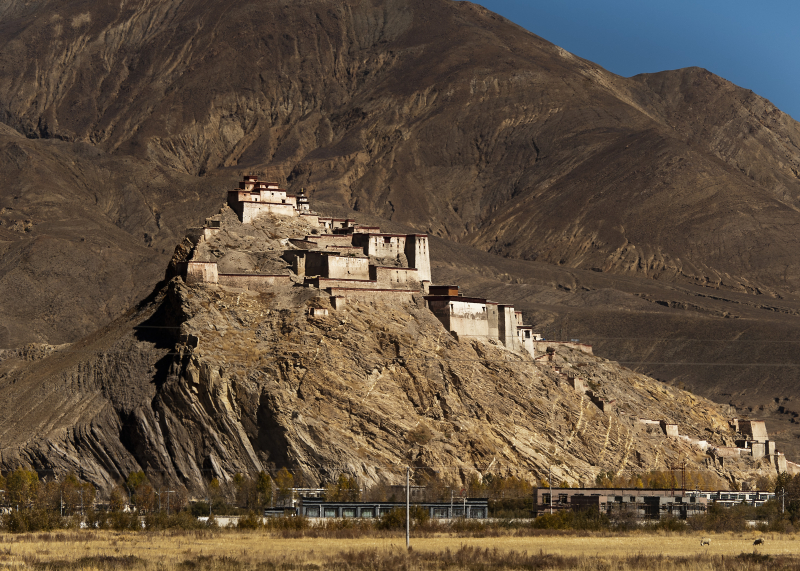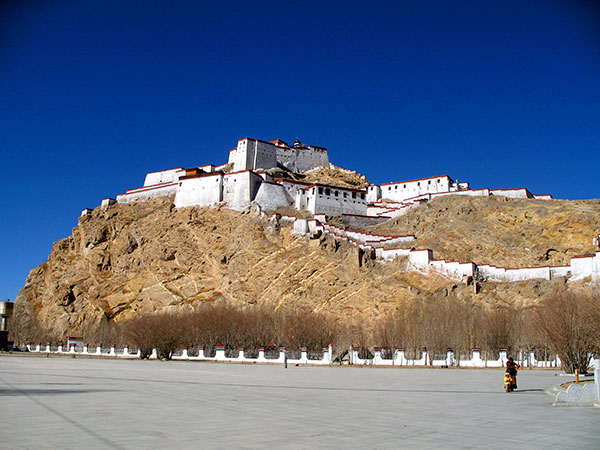Gyantse Dzong Castle
Gyantse Dzong castle which can be seen now was built around 1390 to protect the southern entrances to the Tsangpo Valley and Lhasa. The anti-Buddhist monarch Langdharma's son Pelkhor-tsen, who most likely ruled from 838 to 841 CE, is credited with building the initial castle, which is known as Gyel-khar-tse. According to legend, the current fortifications were constructed around 1268, following the Sakyapa sect's ascension to dominance.
Phakpa Pelzangpo (1318–1370), a local ruler who gained favor by supporting the Sakyapas in the south, erected a sizable palace in 1365. Additionally, he invited Buton Rinchendrub of Zhalu, a well-known Buddhist instructor, to reside in a nearby temple.
As it always did, the castle has been steadily renovated and "still dominates the town and adjacent plains." There is currently a modest museum there that describes the Younghusband expedition's excesses from the Chinese viewpoint. During the Cultural Revolution in China in 1967, the walls were once more demolished with dynamite, although not much more seems to have been documented about this chaotic time. The dzong, however, has steadily undergone restoration and "still rules the town and the plains beyond as it always did." There is currently a modest museum there that describes the Younghusband expedition's excesses from the Chinese viewpoint.
Location: Gyantse, Gyantse County, Shigatse, China















